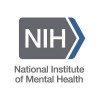
A Digitally Assisted Risk Reduction Platform for Youth at High Risk for Suicide
SuicideMental Health Disorder1 moreDespite efforts to prevent suicide, US rates are climbing, and suicide is the second leading cause of death among youth. Digital tools, especially personal smartphones, are promising avenues to address these issues and can be used to provide a unique understanding of risk factors, including psychological distress, anhedonia and behavioral withdrawal, and sleep disturbance among high-risk individuals. This project aims to enhance the effectiveness of the delivery of preventative health care to youth at risk for suicide by developing a comprehensive digital platform that allows practitioners to integrate mobile sensing data and HIPAA-compliant client communication tools into their management of these young people.

Feasibility, Acceptability, and Preliminary Efficacy of a Novel Personalized Mobile Intervention...
SuicideSuicide and Self-harm3 moreThe primary aim of this grant is to conduct pilot testing on a novel personalized mobile intervention for suicide - Mobile Application to Prevent Suicide (MAPS) - and to establish feasibility, acceptability, safety, and primary outcomes (i.e., suicidal ideation and behavior; re-hospitalization).

Examining Feasibility, Acceptability, and Sustainability of a Novel Personalized Smartphone Intervention...
Suicide and Self-harmSuicide3 moreThe primary aim of the present study is leverage existing infrastructure to develop novel technological features for a novel personalized smartphone intervention system, called the Mobile Application to Prevent Suicide (MAPS), and to establish feasibility, acceptability, safety, and estimate key parameters for secondary outcomes (i.e., suicidal ideation and behavior; re-hospitalization).

Evaluation of the Risk Associated With Impulsivity and Other Neuropsychological Factors on Suicidal...
Suicide AttemptSuicidal behavior (SB) is a major public health problem in France, with over 10,000 suicides (6th in the EU28) and 220,000 suicide attempts (SA) per year. These data seem underestimated by 20%. A large percentage of men (6%) and women (9%) in France made at least one lifetime SA. In addition, SBs are common among young people and are the second leading cause of death among 15-44 year-olds. The interaction of multiple factors in SB complicates the creation of predictive models. These are currently imprecise and prevent the development of consensual recommendations for the management of suicidal patients. Most suicide attempters are evaluated in the emergency room where it is imperative to identify people with a high risk of relapse. Risk assessment is generally based on the experience of the practitioner who uses psychometric scales as support for clinical decisions. This assessment could be improved and supplemented by other sources of information. Thus, we aim to develop a short and specific tool that combines: Neurocognitive measures carried out using computer software on domains strongly associated with SB: impulsivity, affective dysregulation, alterations in decision-making (risky choices), selective attention and verbal fluency. Clinical and psychological assessment including the most predictive items of future SA: life events (environment) and personality traits (vulnerability). Suicide attempters will be assessed for SB and suicidal ideation in the emergency department. These measures will be repeated during a 12-month follow-up. We will use the data obtained to provide a more accurate measure of risk.

Effects of Transcranial Direct Current Stimulation (tDCS) in the Management of Suicidal Ideation...
Depression and SuicideThe main objective of this study is to demonstrate that 15 transcranial direct current stimulation (tDCS) sessions of 30 minutes at 2 mA intensity are effective to reduce suicidal ideation

Ask Suicide-Screening Questions (ASQ) for Youth With Autism Spectrum and Neurodevelopmental Disorders...
Suicidal IdeationBackground: Suicide is the second leading cause of death for young people ages 10-24 years. There is no gold standard for evaluating suicidal thoughts and behaviors in young people with autism spectrum disorder (ASD) or other neurodevelopmental disorders (NDD). Also, youth with ASD/NDD are often excluded from many research studies. Because of this, researchers need more data. They want to make sure they are asking the best questions for young people in clinics such as the National Institute of Mental Health (NIMH) clinic. They want to make sure they have the best data to determine if a person is at risk for hurting or killing himself or herself. Objective: To develop and assess the efficacy of a suicide screening tool for people with ASD/NDD. Eligibility: Youth ages 8 to 17 who are engaged in assessment or treatment at the NIMH for ASD or other NDD Design: Participants will fill out 4 questionnaires during a 1-hour meeting with study staff. They will answer questions about how they have been feeling. They will be asked if they think about or plan to hurt or kill themselves. They will also be asked if they have ever thought about it or planned it in the past. Other questions will assess their understanding of death. Participants can take a break if needed. Parents of the participants will be asked similar questions. Parents will be informed if their child has current thoughts of suicide. About 1 week after the initial assessment, parents will be contacted to fill out a follow-up questionnaire. It will take about 10 minutes to complete.

Implicit and Explicit Assessment of Suicide Risk
Implicit Association TestSuicide3 moreIn 2007 Nock & Banaji developed a so-called implicit suicide risk measurement using a computer tool: the Implicit Association Test (IAT). This measurement, associated with traditional evaluations, makes it possible to better predict suicidal recurrence. In 2020, the Poitiers team of Tello was able to replicate these results on a French population. However, although a high IAT score predicts the onset of suicide at 1 year, there is no data on how this score changes over time nor even data concerning the measure's ability to differentiate a population with explicit suicidal ideation from a population without explicit suicidal ideation. The investigators therefore seek to demonstrate an evolution of implicit suicidal ideation over time by replicating the measurement at inclusion, at 6 months and at 12 months, for different patient profiles: Suicidal ideation vs No suicidal ideation and suicide attempt vs no suicide attempt. Patients will be recruited from the emergency-unit of CHU Amiens-Picardie and will take the suicide-IAT as well as various questionnaires.

mHealth-supported Skills Training for Alcohol-Related Suicidality
Alcohol DrinkingSuicideSuicide is a high priority public health problem and an increasingly prevalent alcohol-related consequence. One-third of people who die by suicide consume alcohol at hazardous rates in the year preceding death. Most people in an acute suicide crisis who present for treatment are admitted to acute psychiatric hospitalization. Yet, the 30-day period following discharge from hospitalization is by far the riskiest period for another suicide crisis. The specific aim for this project is to use a successive cohort design to iteratively develop an intervention called mHealth-supported Skills Training for Alcohol-Related Suicidality (mSTARS). The study team will adapt and iteratively refine a cognitive-behavioral skills training intervention in emotion regulation to be administered in an acute care setting and paired with a post-discharge mHealth app that encourages application of these skills to real life. Two cohorts of five participants each will be enrolled in the project. Participants will complete mSTARS, an intervention that combines inpatient skills training and the mHealth telephone app. Upon completion of the 30-day period, participants will complete self-report measures and participate in an interview designed to evaluate their experience with the mSTARS intervention.

Outcomes Associated With Suicidality in Inpatients With Symptoms of Depression (OASIS-D)
DepressionDepression Moderate5 moreThis 6-month, naturalistic cohort study examines male and female inpatients aged 18 to 75 years i) with any form of unipolar depressive episode (cohort 1); ii) clinical diagnosis of a moderate or severe unipolar depressive episode and suicidal tendencies who agree to participate in a prospective study (cohort 2); and moderate or severe unipolar depressive episodes validated by research interviews and and suicidal tendencies that persist for at least 48 hours after admission who are followed up for 6 months (cohort 3).

Youth Nominated Support Team
PsychosisSuicide2 moreThis study aims to adapt the current Youth-Nominated Support Team (YST) manual used to treat suicide risk for people at clinical high risk for psychosis.
